.
The National Air and Space Museum in downtown Washington, DC is celebrating its 40th anniversary. As part of the commemoration, it revamped its centerpiece exhibit area and introduced a "digital wall" and associated mobile app to make it easier for visitors to find what they are looking for plus related exhibits elsewhere in the museum. The public is invited to spend the night at the museum from 9:00 pm July 1 to 10:00 am ET July 2 with special tours, demonstrations, music, a film festival and other activities. The museum will webcast all night long. C-SPAN will broadcast events earlier in the evening (6:00-9:00 pm ET) including an opening ceremony at 8:30 pm ET.
Many old favorites are still in the central Boeing Milestones of Flight exhibit -- from the Spirit of St. Louis to Mercury and Gemini capsules to the touchable Moon rock -- but they have been spit and polished and many placed in new display cases. Joining the old favorites are the Lunar Excursion Module (LEM), which has been on display for years at one end of the museum, a backup Telstar communications satellite (whose solar panels still work), the Discoverer XIII reconnaissance satellite reentry capsule (the first human-made object recovered from orbit), a large wind tunnel fan used by NASA's predecessor the National Advisory Committee for Aeronautics (NACA), and a variety of other artifacts that span a broad range of aviation and space history.
In all, museum Director Jack Dailey says the renovated gallery provides a "richer experience" to allow visitors to "walk away with a deeper understanding of how spaceflight and aviation have affected their lives."
Walking in the front door from Independence Avenue, the lighted model of Star Trek's U.S.S. Enterprise is the first exhibit to catch the eye. It is the model that was used in all 79 episodes of the original television series. Next to it is a collection of Sally Ride artifacts that includes her Star Trek communicator pin. Margaret Weitekamp, curator for the museum's social and cultural dimensions of spaceflight collection, said that the goal of bringing the Enterprise into the exhibit hall was to help visitors think not only about past
.achievements, but cultural visions of the future.
.
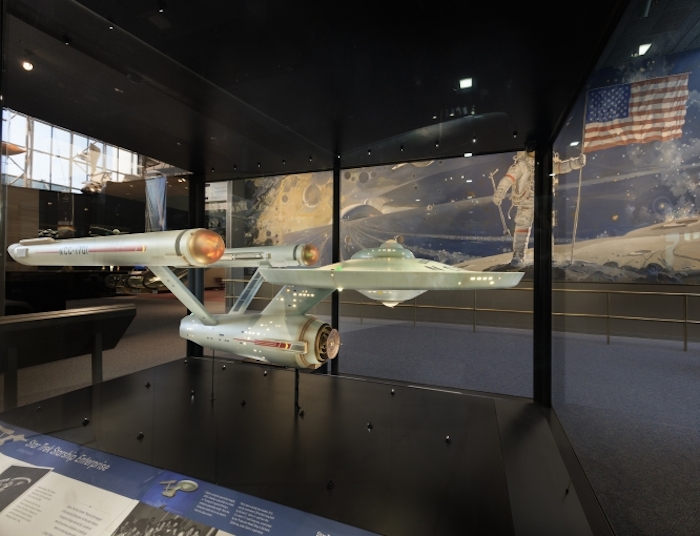
Model of Star Trek's U.S.S. Enterprise on exhibit at the National Air and Space Museum. Photo credit: Eric Long/NASM
.
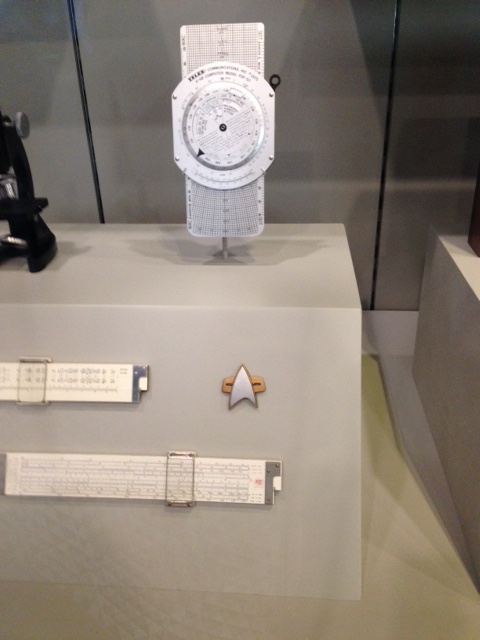
NASA astronaut Sally Ride's Star Trek communicator pin on display at National Air and Space Museum. Photo credit: Marcia Smith
-
Next is the Telstar model, which might easily be mistaken visually for a tiny version of the Death Star from Star Wars. Instead, it is a backup to AT&T's communications satellite, Telstar 1, the first (1962) to provide live transatlantic television and a precursor of the comparatively mammoth communications satellites of today.
.
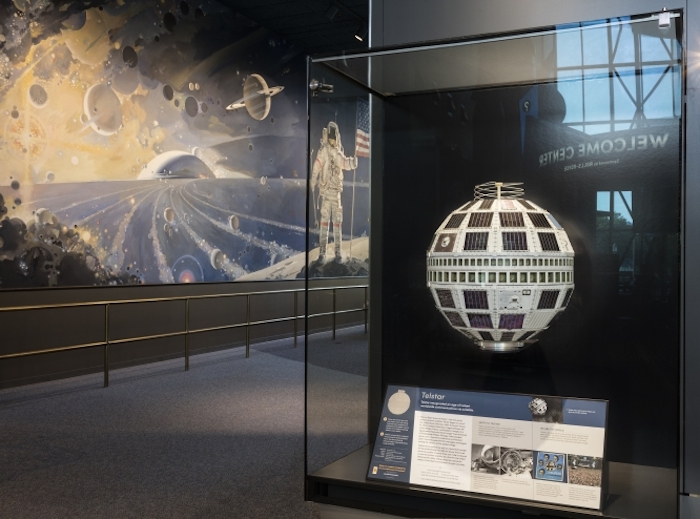
Backup Telstar satellite on display at National Air and Space Museum. Photo credit: Eric Long/NASM.
-
The main exhibit area is much more open now, with the exhibits along the sides instead of in the middle -- impeding foot traffic. Next to the LEM on the west wall are the Mercury and Gemini capsules and the Viking lander -- perhaps a testament to current efforts to bring human exploration and science closer together.
.
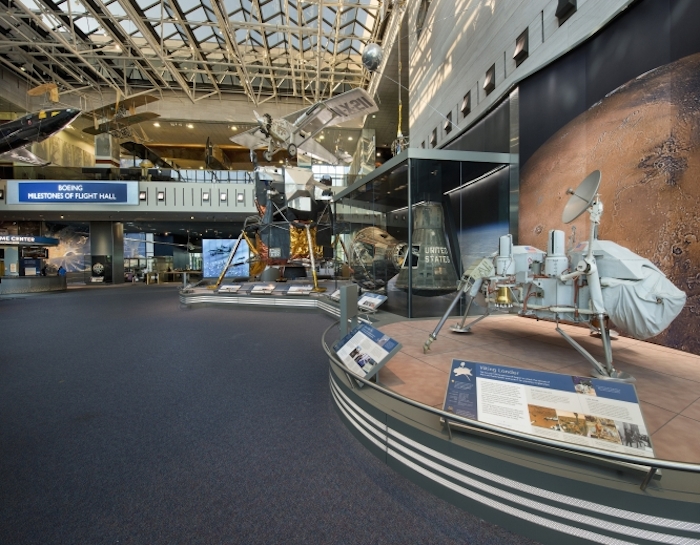
Viking lander, Mercury and Gemini capsules, LEM on display at National Air and Space Museum. Photo credit: Mark Avino/NASM
-
The new 16-by-12 foot digital "GO FLIGHT" touchscreen allows visitors to find what they're looking for and get hints on related exhibits that may be of interest. A mobile app allows smartphone users to access information throughout the museum.
.
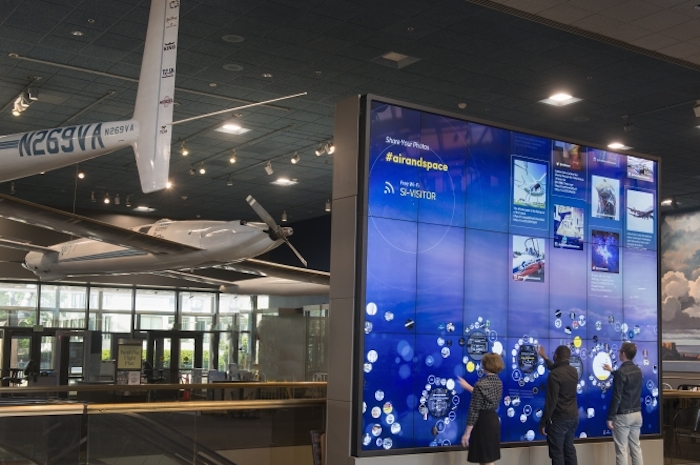
Interactive wall at National Air and Space Museum. Photo credit: Eric Long/NASM.
-
A word to the wise, however -- there are no recharging stations for those smartphones. Weitekamp said there are plans to install them in the future, but for now, make sure your phone is fully charged.
Quelle: Space and Technology Policy Group
4015 Views
